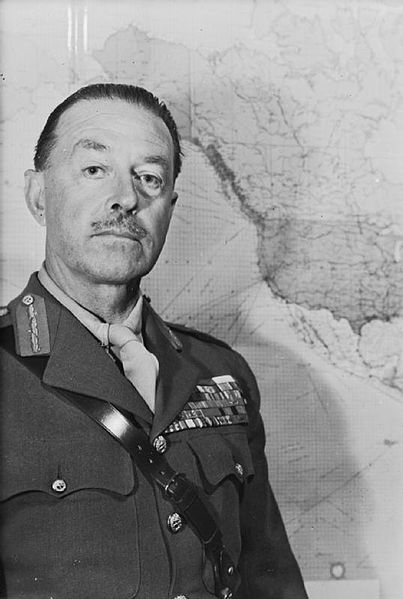Harold Alexander
Harold Alexander was a senior officer in the British army during World War Two. During the war he served in Dunkirk, Burma, Italy and Northern Africa. In December 1944 he was promoted to the rank of field marshal and after the war became Governor-General of Canada.

Background
Born in 1891, Alexander was schooled at Harrow and then Sandhurst. His first commission was with the Irish Guards, and in 1914 he was a member of the British Expeditionary Force and was wounded at First Ypres. In January 1916 he was awarded the Military Cross in 1916 for his service at the Battle of Loos; later in the year he was both appointed to the Distinguished Service Order and inducted into the French Légion d'honneur for his service at the Battle of the Somme.
In the years between World War One and World War Two, Alexander took up the role of Brigadier-General as he was deployed in India.
World War Two
At the outbreak of war, Alexander took charge of the First Infantry Division in France. In May 1940 he led the First Division’s retreat to Dunkirk. Alexander waited until all British troops had been evacuated before he boarded the last vessel back to England.
Alexander was sent to Burma as a full General in 1942, where he was tasked with stopping the Japanese onslaught. He was unable to do this, and instead had to help as the British and Commonwealth forces withdrew to Assam from Rangoon.
Nevertheless, Alexander was still viewed favourably in the military and in August 1942 he was appointed was moved to the British forces in North Africa, where Winston Churchill named him as the army’s commander-in-chief. Here he presided over the Second Battle of El Alamein.
In May 1943 he successfully led the Allied invasion of Sicily. His subsequent invasion of Italy, however, became hindered upon the diversion of both troops and vital equipment to forces who were operating on different fronts. Heavy losses befell the Allies at the Battle of Anzio in January 1944, they had arrived in Rome by June 1944. Alexander’s forces then continually made gains northwards in the face of vigorous German resistance.
Alexander was promoted to the post of Field Marshall in 1944 and two years later was made a Viscount. From 1946 to 1952 he served as Canada’s Governor-General. He was made Earl Alexander of Tunis in 1952 and from then until 1954 he served as Minister of Defence in the Conservative cabinet under Churchill.
Harold Alexander died in 1969. Historian Alan Palmer later described him as:
“A military commander with little taste for panache but distinguished by imperturbable confidence. He possessed remarkable gifts for utilising and reconciling opposing points of view.”
See also: Claude Auchinleck
MLA Citation/Reference
"Harold Alexander". HistoryLearning.com. 2025. Web.
Key facts
| Name: | Harold Alexander, 1st Earl of Tunis(Born Harold Rupert Leofric George Alexander) |
| Birth Date: | 10 December 1891, London |
| Death: | 16 June 1969 (aged 77), Slough |
| Wife: | Margaret Alexander |
| Alma mater | Harrow School; Royal Military College, Sandhurst |
| Career History: |
|
| Selected Decorations, Medals, Awards: |
|
